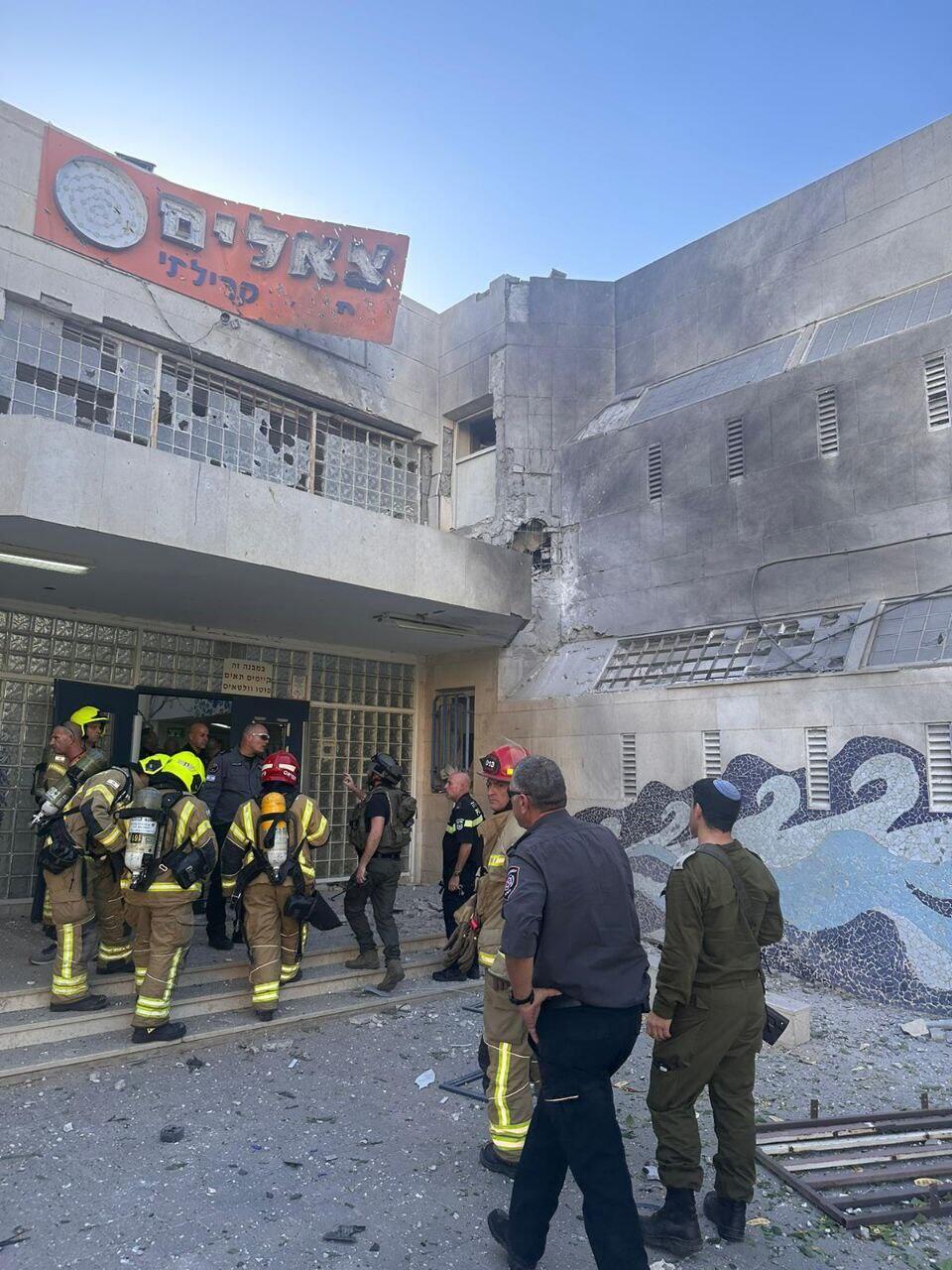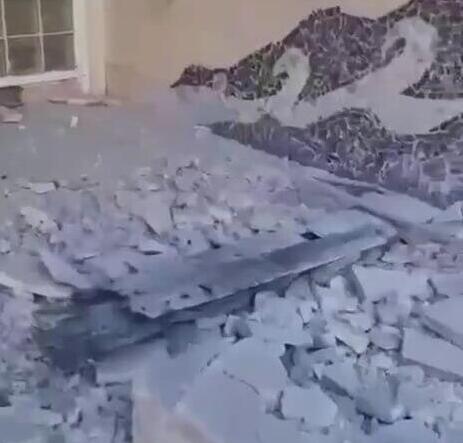Syrian explodes in courtyard of Eilat school
(Video: Magen David Adom)
The IDF reported on Friday that a drone that exploded on Eilat the day before originated from Syria, and not Yemen as initially estimated.
Read more:
But how did the Iran-backed Shiite militias in Syria manage to skirt Israeli defenses and hit the southern resort town without triggering any alarms?
Israel is facing a three-pronged threat in addition to the rockets and mortars of Hamas and Hezbollah: ballistic missiles, drones and cruise missiles. While the trajectory of ballistic missiles can be predicted, making them relatively easier to intercept, drones and cruise missiles pose a more complex challenge.
Once a ballistic missile is launched, it follows a defined and direct path, and its direction, altitude and angle can be tracked and predicted, including its impact location. The same applies to drones, but for shorter ranges. On the other hand, drones and cruise missiles do not fly as fast as ballistic missiles. In fact, they fly relatively slowly at speeds of 600 km/h (370 mph) or even less.
Thus, a drone launched from Syria will reach Eilat in at least an hour. However, these weapons not only fly slowly but also fly at a low altitude, and they are small. Both cruise missiles and drones are small objects that not every radar can detect, especially those that target ballistic missiles coming from a distance.
Therefore, in order to identify these drones, smaller and more sensitive radars are needed, which provide more false alarms like those we see in the north.
Drones and cruise missiles possess a significant advantage: they can be programmed or guided to deviate from a straight path, which presents a major challenge.
If a militia decides to launch a weapon like that from Deir ez-Zor in Syria toward Eilat, they can bypass Israeli territory. Instead, they can fly the drone from Jordanian territory, make a 45-degree turn toward Amman, and then change direction to the south to target Eilat.
The State of Israel is currently prioritizing areas where potential threats are expected. Egypt and Jordan have not been considered as such until now. As a result, the drones that passed over Egyptian territory fell near Nuweiba, while others fell near Taba. Although they came close to reaching Eilat from the direction they flew over Egyptian territory, the attention was not focused there.
It is important to emphasize that the attention is primarily directed toward the Red Sea. This means that Israel's sensors, radars and patrol aircraft are primarily focused on the southern region of the Red Sea and east toward Syria, with less emphasis on Jordan.
The Shiite militias in eastern Syria, in the Deir ez-Zor area and beyond Al-Bukamal, have a base named Imam Ali. It was established with the initiative and assistance of the Iranian Revolutionary Guards, and from there the drone that reached Israel from the direction of Jordan was launched. The same can happen with cruise missiles.
Aftermath of drone strike on southern Israel school
(Video: Magen David Adom)
Israel has aircraft capable of detecting these UAVs and cruise missiles via radar. These are the Adir F-35 aircraft, which can both identify and intercept these weapons. However, it is essential for the aircraft to patrol the right area.
The Arava's terrain, with the Edom and Moab Mountains, presents a challenge by hiding drones that approach from a distance flying at low altitudes. As these drones approach the Eilat area, they lower their altitude even more, making detection difficult. This scenario raises the risk of a drone exploding in densely populated areas like schools. While cruise missiles can carry a larger payload, drones usually have a maximum capacity of 70 kilograms, with the one that exploded in Eilat estimated to have carried about 40 kilograms.
Drone launchers could have targeted Tiberias, for instance, but they knew it would be easily intercepted there. So, they chose to go to the border area between Syria and Iraq, launching the drone from there and routing it through Jordan.
These militias have previously claimed responsibility for launches toward Israel, impacting the Dead Sea. The reason Israel attacked Damascus and not northeastern Syria, the drone’s launch point, was to send a message to the Syrian regime not to host them on their territory.
The Iranians, Shiite militias’ patrons, were the ones who devised this method. In September 2019, facilities of the Saudi oil company Aramco were disabled, halting 50% of the country's oil refining. This attack was carried out using drones and cruise missiles launched from Iran, passing through Iraq into Saudi Arabia. Both the Houthis and the Shiite militias in Syria have since repeatedly used this method.






